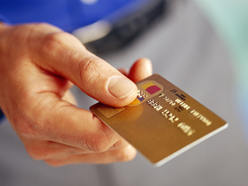
Credit and debit card spending in Canada grew 5.05% in dollar volume during the third quarter of 2017 over the same period last year, finds a Moneris Solutions Corporation report. This quarter marks the highest 2017 quarterly year-over-year growth.
“All year we’ve seen a strong and steady climb in spending, and this quarter continues the trend, putting Canada’s economy in a good position moving into the holiday season,” says Angela Brown, president and CEO of Moneris. “This growth is in line with the Bank of Canada’s expectations reflected in its increase of the overnight rate target to one per cent in September. We expect to see an encouraging end to 2017.”
Read: Business sentiment moderates: BoC poll
The results are on trend with other economic indicators, says the firm. While Canada’s GDP remained flat in July, average weekly earnings and retail sales, posted by Statistics Canada during the July time period, increased. The Moneris report shows both debit card and credit card spending increased year over year, with a 3.08% and a 6.11% growth in dollar volume, respectively.
Provincial breakdown
This quarter measured positive growth for all provinces except Saskatchewan, where spending was down 0.27%.
Newfoundland rebounded from last quarter’s decline with an increase of 1.17% over last year and Alberta continued a trend of positive growth with an increase of 3.08% over the same quarter in 2016.
Read: Help frugal retirees loosen the purse strings
Ontario (5.62%), British Columbia (6.32%), Quebec (5.48%) and Nova Scotia (4.95%) all posted strong growth.
Contactless payments sustain growth
Contactless payments continued to surge in Canada this quarter. There was a 51.53% increase in the amount of tapped dollars over 2016. Further, the total number of contactless transactions increased by 48.35% over the same period in 2016.
These increases align with the continued expansion of tap-and-pay options. For example, Q3 2017 was the first full quarter since Android Pay launched in Canada. However, the rate of new adoption has slowed when compared to the same quarter in 2016, when spending on contactless was up 145.06% year over year. This further indicates that contactless payments have become a mainstream option for Canadians.
Foreign visitor spending up
July was the strongest month of the quarter, with 5.96% year-over-year growth, followed by August (5.73%). September posted the lowest growth at 3.95%.
Read: Can this couple still afford early retirement?
Canada’s 150th birthday celebration may have contributed to the spending surge from international visitors in the third quarter, with an increase of 12.16% in spending on foreign cards over the same quarter in 2016.
The biggest year-over-year increases in terms of dollars spent came from visitors from the U.S. (up 10.86%), China (up 19.85%) and Mexico (up 66.76%).
Short- and long-term spending
The increase in travellers may have contributed to the quarterly rise in spending in travel-related categories, including hotels, which were up 7.80%, and restaurants, up 7.73% year over year. Fast food had an even bigger increase, up 13.43% over the same time last year.
Read: How small talk can reveal planning opportunities
Canadians also focused their spending closer to home, with longer-term investments in home improvement and vehicle purchases. The home improvement category, which includes general contractors, lawn and garden supplies, hardware stores and roofing and siding suppliers, saw overall growth of 6.68%. Similarly, vehicle purchases were up 6.36% year over year.
“It’s encouraging to see growth spread across a variety of different industries,” says Brown. “Visitors to our country, as well as Canadians, clearly enjoyed the summer months to their fullest. But based on the data, Canadians are also looking ahead and making practical, longer-term investments.”